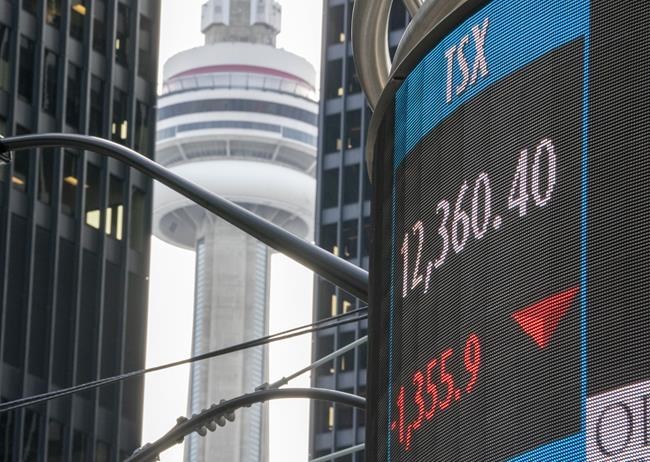TORONTO — Canada's main stock index ended down almost 400 points in the third straight day of downward movement amid better-than-expected employment numbers and expectations of further rate hikes on both sides of the border.
The S&P/TSX composite index ended down 395.88 points or 2.1 per cent at 18,583.13.
Colin Cieszynski, chief market strategist at SIA Wealth Management, said markets were hit hard Friday, particularly in the US.
In New York, the Dow Jones industrial average was down 630.15 points or 2.1 per cent at 29,296.79. The S&P 500 index was down 104.86 points or 2.8 per cent at 3,639.66, while the Nasdaq composite was down 420.91 points or 3.8 per cent at 10,652.40.
Canada got a bit of a boost from employment numbers released today that were better than expected, as well as the rally in crude oil, Cieszynski said.
The Canadian economy saw a modest bump in employment in September, while the unemployment rate fell to 5.2 per cent.
U.S. non-farm payroll data released Friday was also better than expected, said Cieszynski.
He said that means the central banks don’t need to pivot from their quantitative tightening paths just yet.
BMO chief economist Douglas Porter said in a note Friday morning that the bank is still predicting a rate hike of half a percentage point at this month's Bank of Canada meeting, but added that the upcoming Business Outlook Survey and inflation data could change that.
Of course, analysts have been saying that some so-called bad news on employment, inflation or earnings might actually be good news for the market, as it could signal a coming end to rate hikes.
But Cieszynski said good news is still good news — the latest numbers show that central banks have been successfully deflating the bubble without sending markets into a crisis.
“It does mean that the economy is kind of holding up,” he said. “We don’t want everything spiraling into a crisis. That would be a disaster for everybody.”
The Canadian dollar traded for 72.93 cents US compared with 72.89 cents US on Thursday.
The November crude contract was up US$4.19 at US$92.64 per barrel and the November natural gas contract was down 22.4 cents at US$6.75 per mmBTU.
The December gold contract was down US$11.50 at US$1,709.30 an ounce and the December copper contract was down almost six cents at US$3.39 a pound.
Cieszynski said he will be watching earnings season in the US with a close eye, especially for global companies that may be affected by the US dollar’s rise.
“We've had a general slowing of the economy, but the bigger problem for the Americans is going to be their dollar,” he said.
“The U.S. dollar has just gone up so much against everything that I think it's going to be a problem for companies in their earnings.”
This report by The Canadian Press was first published Oct. 7, 2022.
Companies in this story: (TSX:GSPTSE, TSX:CADUSD=X)
The Canadian Press



